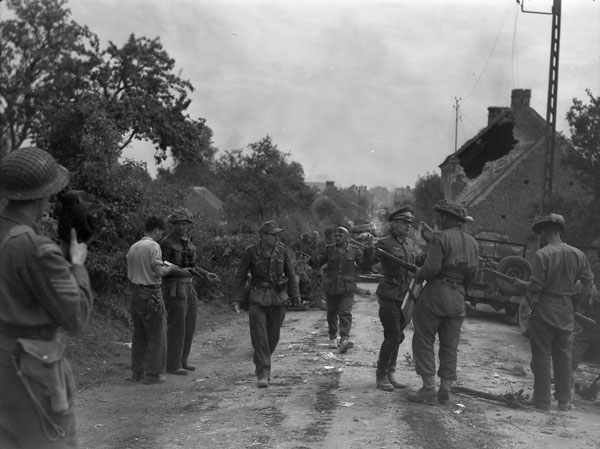Early Life
After high school and a brief period of work in his father-in-law’s hardware business, John Foote re-entered education full-time to study for the ministry. He attended three universities before graduation from Montréal’s Presbyterian Theological College in 1934 and went on to serve congregations in Fort Coulonge, Québec, and Port Hope, Ontario.
War Service
Foote enrolled in the Canadian Chaplain Service on the outbreak of the Second World War as an honorary captain (all chaplain ranks at the time were honorary). Overseas he was attached to the Royal Hamilton Light Infantry, nicknamed the “Rileys.”
In 1942, the Rileys were assigned one of the central roles in the 6,000-plus-man Allied raid on the French port of Dieppe. The raid was mounted because opening a second front against German-occupied Europe was impossible in 1942, due to manpower and equipment shortages. Some 4,963 Canadian soldiers — of the 2nd Canadian Division, reinforced by tank and machine-gun battalions — formed the bulk of the assaulting troops. Another 1,075 British commandos and 50 American rangers were attached to assault flanking coastal batteries.
Originally planned by Combined Operations Headquarters in Britain, and scheduled for 5 July 1942 as Operation Rutter, the raid was subsequently cancelled due to bad weather. It was later remounted on the orders of Lord Louis Mountbatten, head of Combined Operations, on 19 August as Operation Jubilee.
Daring at Dieppe
The Royal Hamilton Light Infantry assaulted a section of shoreline code-named White Beach, on the right side of the main Dieppe beaches, where a large casino sprawled across the town’s broad Esplanade. The battalion landed after dawn at 5:20 am, with the German defenders alerted by earlier landings to the east and west of Dieppe. Although some Rileys were able to fight room-by-room through the casino and make it into the town, they eventually had to return to the beach due to their small numbers.

After landing under enemy fire, Foote worked at the unit’s Regimental Aid Post (RAP), set up in a small depression on the pebbly beach. He assisted the unit’s medical officer with the wounded at the RAP, and also made several forays across the fire-swept beach to inject morphine, administer first aid and carry wounded soldiers to the RAP, in the process saving many lives. By the time the order was given to withdraw at 9 am, the tide had gone out, exposing those trying to get to the landing craft. Despite this added danger, Foote carried many of the wounded across the open beach to the safety of the small landing craft.
Although he had several opportunities to board the craft and leave the beach, he chose to remain behind to administer to his fellow prisoners of war during their long captivity under the Germans. Nearly 2,000 Canadians were taken prisoner at Dieppe. Foote was liberated in 1945.
In 1946, he was awarded the Victoria Cross for his selfless bravery under fire at Dieppe.
Life Post-War
Foote remained in the army until 1948, when he retired as a lieutenant-colonel. He entered Ontario politics and was elected Progressive Conservative Member of the Provincial Parliament (MPP) for Durham. He served until 1959 and was minister of Reform Institutions from 1950 to 1957 in the government of Premier Leslie Frost. Between 1964 and 1973, he served as the honorary lieutenant-colonel of the Rileys.
Memory
In 1982, the Royal Canadian Legion branch where Foote lived in Cobourg, ON, was named after him, while in 1989 the Rileys’ armouries in Hamilton was renamed in his honour. Plaques in Barrie, ON, and in Calgary’s Victoria Cross Park also commemorate his bravery.


 Share on Facebook
Share on Facebook Share on X
Share on X Share by Email
Share by Email Share on Google Classroom
Share on Google Classroom


